In the landscape of addiction recovery, a quiet revolution is taking place. While traditional 12-step programs continue to serve as crucial foundations for early sobriety, a growing number of treatment professionals are recognizing that lasting recovery requires something deeper—a transformation at the soul level that goes far beyond behavior modification.
Corey Gamberg, Executive Director of Rockland Recovery Treatment Centers in Massachusetts, represents this new wave of thinking. His approach integrates Jungian depth psychology with traditional recovery methods, creating what he calls “bigger containers” for people who have outgrown conventional treatment models.
The Individuating Nature of Addiction
“Everything individuates,” Gamberg explains, drawing from Carl Jung’s concept of individuation—the psychological process of integrating the conscious and unconscious parts of the mind. “As a person moves through individuation, so does phenomena. The experience of addiction itself individuates, and the experience of recovery itself individuates.”
This perspective challenges the one-size-fits-all approach that has dominated addiction treatment for decades. Gamberg points to the evolution of addiction itself: “I’m a drug addict who comes from the oxycontin era of drug addicts, and that’s not really something that we see as much today as we did 15 years ago. Heroin and fentanyl are very different. The increase in people using different drugs like methamphetamine has increased.”
As addiction changes, so must our approaches to recovery. This recognition has driven Gamberg’s mission at Rockland Recovery to stay “on the cutting edge of substance abuse treatment.”
Beyond Cognitive Behavioral Interventions
Traditional addiction treatment has long relied on cognitive-behavioral therapy (CBT), dialectical behavior therapy (DBT), and evidence-based practices focused on changing thoughts and behaviors. While these approaches have their place, Gamberg argues they often miss the deeper psychological wounds that drive addictive behavior.
“Recovery just has to be more than the cessation of symptom and the change in behavior and not using,” he states. “Because as someone in recovery for so long, obviously I’ve seen a lot of people who do that sort of thing—go to church, go to the meetings, they live that way of life—but they’re still struggling with all these underlying, more deeply rooted issues that just changing behavior doesn’t touch.”
This surface-level approach, he argues, creates a shame-based recovery culture where any struggle or relapse is immediately seen as failure, rather than as part of a natural process of growth and individuation.
The Hidden Jungian Roots of Alcoholics Anonymous
What many people don’t realize is that Carl Jung played a crucial role in the founding of Alcoholics Anonymous. The story begins with Roland Hazard, an alcoholic who wrote to Freud, Adler, and Jung seeking help. Only Jung responded, inviting Hazard to Zurich for treatment.
After a year of analysis, Hazard relapsed almost immediately upon leaving. In a moment of humility that would shape addiction treatment forever, Jung told him: “I kind of misdiagnosed you. I thought you were a hard drinker, but you’re what people call a real alcoholic, and the only thing that’s going to help you is some sort of spiritual experience or spiritual transformation.”
Hazard returned to the United States, joined the Oxford Group (AA’s precursor), and eventually influenced the formation of Alcoholics Anonymous through his connection with Bill W.’s friend Ebby Thatcher.
“Without Jung, we really don’t have this idea that spirituality or some sort of spiritual experience is the answer or one of the solutions for addiction,” Gamberg notes.
Redefining Spiritual Experience
But what exactly constitutes a “spiritual experience” in recovery? Gamberg offers a psychological interpretation that moves beyond religious dogma:
“A spiritual experience is when something happens to me that has happened so many times, yet I can experience it perspectively and embody it in a totally different way. I don’t react in my old behavior, I don’t react in my old thinking. I’m able to see something happening to me and respond in a completely different way that allows me to find more meaning in that experience versus some sort of resolution to it.”
This definition emphasizes metacognition—the ability to observe one’s own thoughts and feelings without being overwhelmed by them. It’s about developing what Jung called a “porous ego”—one that can allow unconscious contents to emerge without losing structural integrity.
The Three-Year Crisis Point
One of the most significant insights from Gamberg’s work involves what he calls the “four to six-year mark” in recovery—a critical juncture where many people in long-term sobriety begin to struggle, not with the desire to use substances, but with the limitations of their recovery methodology.
“I believe that the 12 steps are a mythology,” Gamberg explains. “Mythology can be thought of as a psychic container. It holds our suffering, it gives our suffering context, it gives my suffering language, it gives my suffering ritual.”
For the first several years of recovery, this mythological container effectively holds a person’s experience. “But then that exact thing happens where you kind of take a step back, and the formulaic aspect of what you’ve been doing and the rigidity of what you’ve been doing starts to confine, and something in you is trying to grow beyond that.”
The tragedy, according to Gamberg, is that “we don’t have places for those people to go that don’t want to return to use but also can admit that what they’ve been doing really isn’t working anymore.” Too often, the recovery community responds with dismissal: “Oh, you’re overthinking it” or “Maybe your ego is getting in the way.”
James Hillman and the Return of Soul to Psychology
Central to Gamberg’s approach is the work of James Hillman, Jung’s intellectual heir who founded archetypal psychology. Hillman argued for “returning soul to psychology” and viewed psychological symptoms not as pathologies to be eliminated, but as communications from the soul.
“If you break down that word psychopathology—psyche pathos—that is the love of the soul,” Gamberg explains. “A symptom like depression is the soul’s way of loving us into seeing something about our lives that we cannot see from ego consciousness.”
This perspective radically reframes the recovery experience. Instead of viewing addiction as a moral failing or brain disease to be cured, it becomes what Gamberg calls “this sort of Promethean rupture in the psyche—this desire to transcend and grab that fire and also feel divine in myself.”
Working with Depression as Soul Communication
Gamberg offers a practical example of how this depth psychology approach works in practice, using depression as an illustration:
“When you experience depression from a Hillman perspective, if you kind of work with it a little bit and embody the depression a little bit, you realize certain things. When you’re depressed, you watch different movies, you eat different food, you listen to different music, and you might dress differently. Through that experience with depression, you’re able to gain a perspective through that lens that you weren’t able to gain through your ego’s perspective prior.”
Rather than immediately trying to eliminate depression through medication or cognitive restructuring, this approach invites curiosity: “What is this depression trying to show me? What perspective is it offering that my normal consciousness cannot access?”
The Rhythm of Suffering and the Descent-Return Pattern
Influenced by both Jung and Hillman, Gamberg emphasizes what he calls “the rhythm of suffering.” Drawing from the myth of Persephone, he explains:
“There is a rhythm to suffering. This idea that you’re in this process now and you’re sober and you’re helping other people and you’re showing up—by no means does it mean that you’re not going to suffer. Heartbreak is going to happen, relationships are going to end, jobs are going to end.”
The key is learning to navigate these inevitable descents differently: “We need to learn how to maneuver the underworld in a participatory way, not in a defensive way.”
This represents a fundamental shift from the transcendence-based model of traditional recovery to what Gamberg calls a depth-based approach. Instead of trying to rise above difficult emotions, the goal becomes learning to move through them with wisdom and consciousness.
Post-Recovery Work: Building Bigger Containers
Gamberg has begun developing what he terms “post-recovery work”—specialized treatment for people who have stabilized in traditional recovery but need deeper containers for continued growth.
“It’s not walking away from recovery, but it’s changing the way we understand it,” he explains. “It’s moving away from formula and rigidness, and it’s moving into more of trying to deeply understand the roots of the problem in the first place, now that I’ve had some time away and I’ve stabilized.”
This work involves what Hillman called “seeing through”—looking beyond surface behaviors to identify the archetypal images and mythic patterns underlying addictive behavior. “Behind the behavior of addiction, there is an image,” Gamberg notes. “The images of descent, the images of rupture, the images of longing and exile—these are the things that then need to be amplified in the individual’s experience and revisioned into their mythos.”
The Aesthetic Response and Re-ensouling Recovery
Drawing from Hillman’s concept of the “aesthetic response,” Gamberg emphasizes the importance of beauty and meaning-making in recovery:
“Part of it is starting to have these little moments where you try to find the beauty in what’s right in front of you and appreciate what’s in front of you and see it as alive. You start to take more concern about the way you keep your home, you start to take more concern about the way you decorate your office, you start to take more concern about the way you’re eating and the food you’re eating.”
This isn’t superficial lifestyle advice but a recognition that our external environment profoundly affects our psychological state. As Hillman observed, “If you go into your office and it’s bright fluorescent lights and there’s nothing on the walls and it’s all white, there’s no healing that’s going to happen there.”
Moving Beyond Pathology to Mythopoetics
One of the most radical aspects of Gamberg’s approach involves introducing mythological thinking into addiction treatment. He works with clients to understand their addiction experience through classical myths like Prometheus, Persephone, and Tantalus.
“It’s bringing mythopoetics into the addiction space and allowing people to understand the addiction process as initiation, but also as a living myth for them. It’s part of their story.”
This mythological framework provides what traditional clinical language often cannot: a sense of meaning, purpose, and connection to something larger than individual pathology.
The Future of Addiction Treatment
Gamberg envisions a future where addiction treatment integrates the best of traditional recovery methods with depth psychological approaches. The goal isn’t to abandon 12-step programs but to recognize their limitations and create pathways for continued growth.
“AA and that 12-step model is great for that grounding experience, but it’s not a place to live in,” he explains. “Recovery needs to evolve as addiction itself evolves.”
This evolution involves several key elements:
- Longer treatment timelines that recognize recovery as an ongoing process of individuation rather than a 30-60 day fix
- Integration of multiple modalities including traditional therapy, body-based practices, and archetypal psychology
- Recognition of the soul dimension in addiction and recovery
- Support for post-recovery growth that doesn’t pathologize the desire for deeper meaning
- Emphasis on personal ritual and meaning-making rather than one-size-fits-all approaches
Practical Applications
For treatment providers interested in integrating these approaches, Gamberg suggests starting with small shifts in perspective:
- Reframe symptoms as communications rather than problems to be eliminated
- Encourage aesthetic awareness in clients’ living spaces and daily routines
- Introduce mythological thinking through storytelling and archetypal exploration
- Support the development of personal rituals that connect clients to meaning
- Practice “holding space” rather than always offering solutions
- Recognize the natural rhythm of descent and return in the recovery process
The Soul’s Journey Beyond Sobriety
What emerges from Gamberg’s work is a vision of recovery that honors both the practical necessity of abstinence and the soul’s deeper need for meaning, beauty, and growth. This isn’t about abandoning evidence-based practices but about recognizing their limitations and expanding our understanding of what true healing requires.
“Recovery just has to be more than that,” Gamberg concludes. “We’re not saying anything bad about 12 steps or traditional recovery in that way. We’re just saying that inevitably it does lack, and what we need to find is where people can go in that moment or experience of lack.”
For the thousands of people who find themselves stable in recovery but hungry for something deeper, this integration of Jungian psychology with addiction treatment offers a path forward. It’s a recognition that the soul’s journey doesn’t end with sobriety—in many ways, that’s where it truly begins.
As addiction continues to evolve and individuate, so too must our approaches to healing. The future of recovery lies not in choosing between traditional and depth approaches, but in creating bigger containers that can hold the full complexity of human transformation. In doing so, we honor both the practical necessity of behavioral change and the soul’s eternal longing for meaning, beauty, and authentic growth.
The revolution in addiction treatment isn’t just about new techniques or modalities—it’s about remembering that behind every addiction is a human soul seeking connection, transcendence, and meaning. When we can hold space for that deeper longing while providing practical tools for healing, we create the possibility for recovery that truly transforms lives from the inside out.



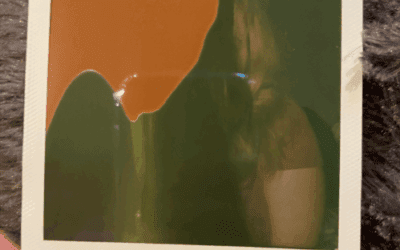



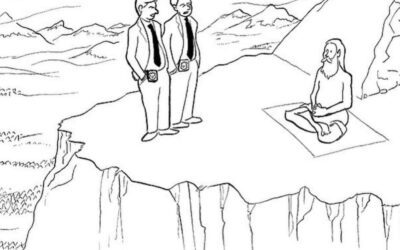

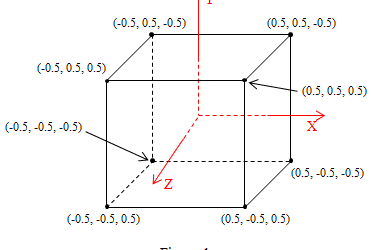


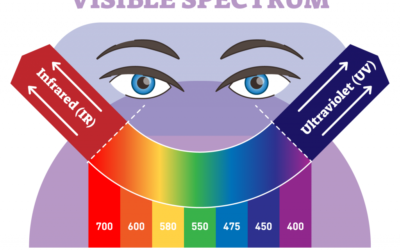




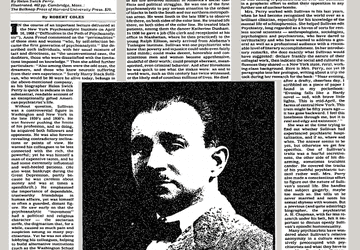








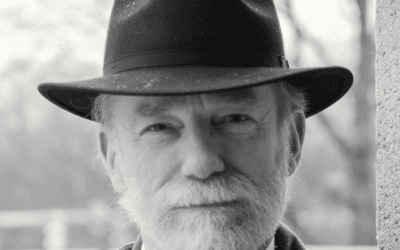
0 Comments